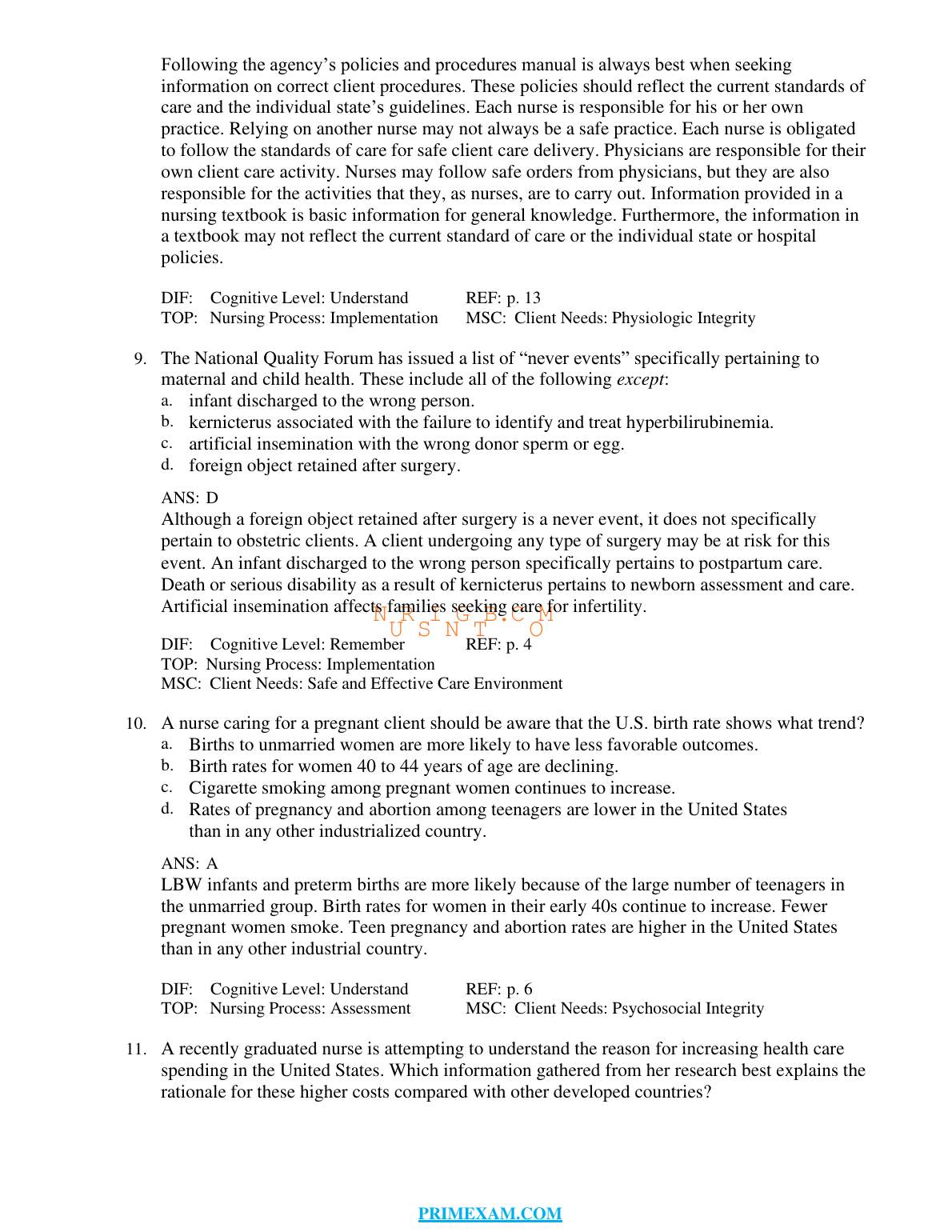 Cookies!
Cookies!
 View example
View example
Maternity and Women's Health Care 11th Edition by Deitra Leonard Lowdermilk, Kitty Cashion, Shannon E. Perry, Kathryn Rhodes Alden, and Ellen Olshansky
1. In evaluating the level of a pregnant woman’s risk of having a low-birth-weight (LBW) infant,
which factor is the most important for the nurse to consider?
a. African-American race
b. Cigarette smoking
c. Poor nutritional status
d. Limited maternal education
ANS: A
For African-American births, the incidence of LBW infants is twice that of Caucasian births.
Race is a nonmodifiable risk factor. Cigarette smoking is an important factor in potential
infant mortality rates, but it is not the most important. Additionally, smoking is a modifiable
risk factor. Poor nutrition is an important factor in potential infant mortality rates, but it is not
the most important. Additionally, nutritional status is a modifiable risk factor. Maternal
education is an important factor in potential infant mortality rates, but it is not the most
important. Additionally, maternal education is a modifiable risk factor.
DIF: Cognitive Level: Understand REF: p. 6
TOP: Nursing Process: Assessment
MSC: Client Needs: Health Promotion and Maintenance, Antepartum Care
2. What is the primary role of practicing nurses in the research process?
a. Designing research studiesU
b. Collecting data for other researchers
c. Identifying researchable problems
d. Seeking funding to support research studies
ANS: C
When problems are identified, research can be properly conducted. Research of health care
issues leads to evidence-based practice guidelines. Designing research studies is only one
factor of the research process. Data collection is another factor of research. Financial support
is necessary to conduct research, but it is not the primary role of the nurse in the research
process.
DIF: Cognitive Level: Understand REF: p. 14 TOP: Nursing Process: N/A
MSC: Client Needs: Safe and Effective Care Environment
Â
| Author | ProfoundTutor |
| Published | 16 Dec 2025 |
| Included files | |












